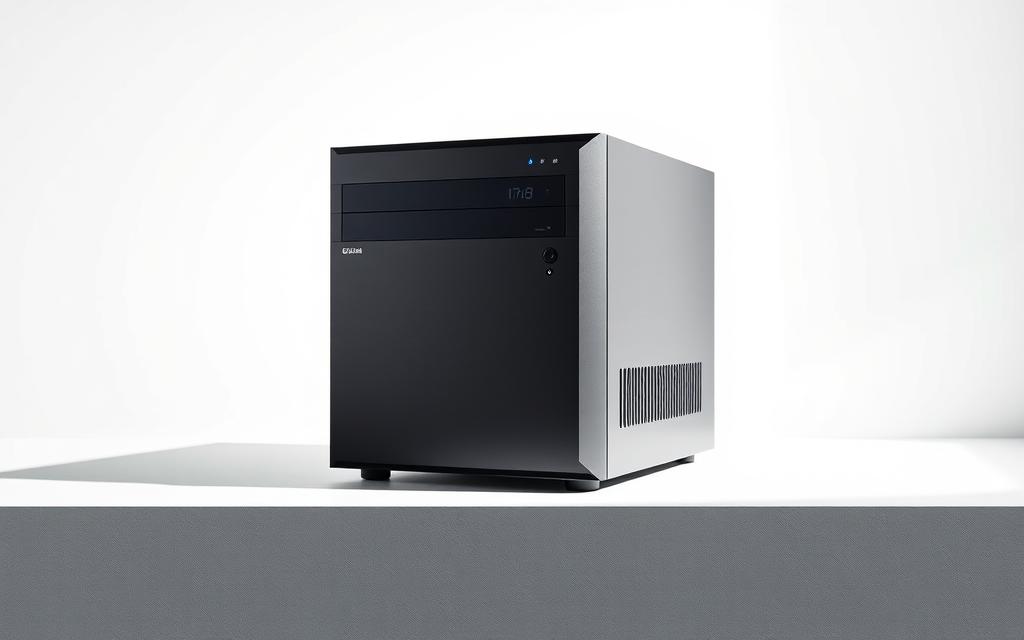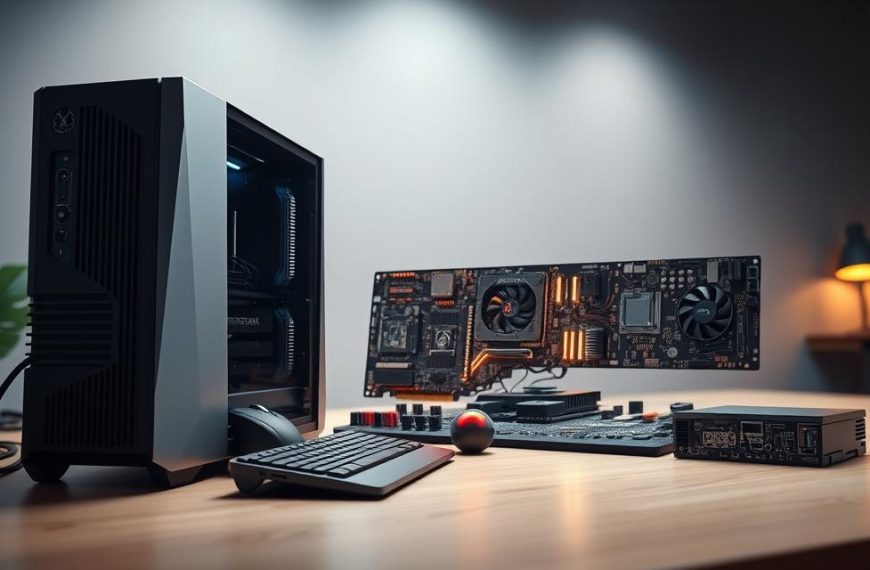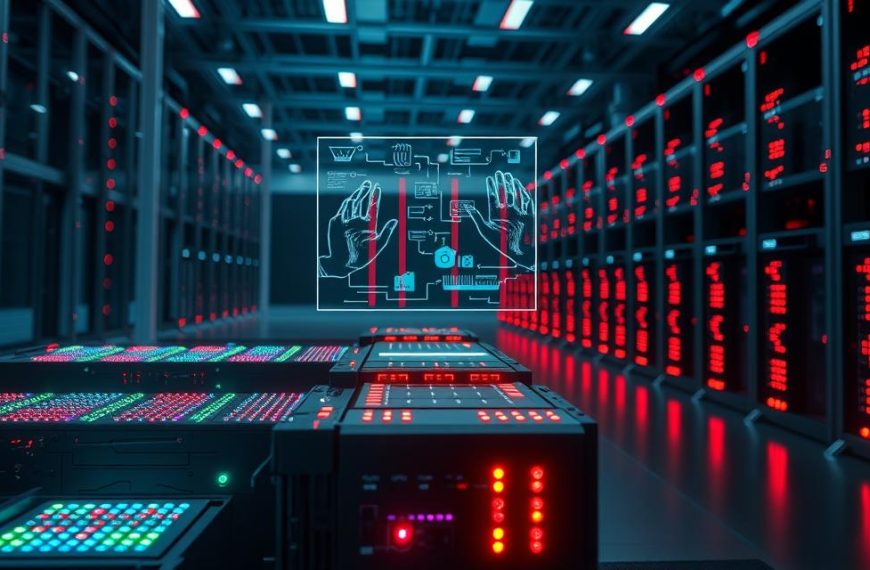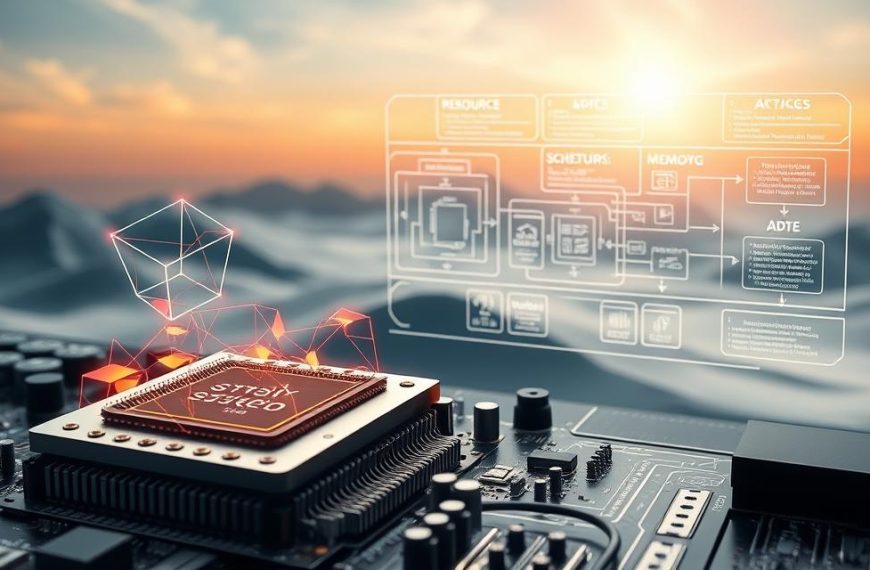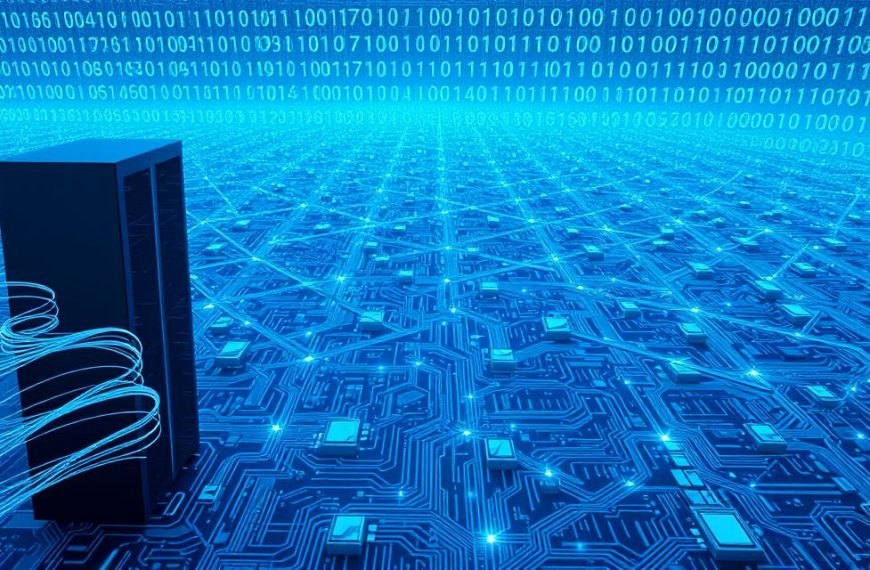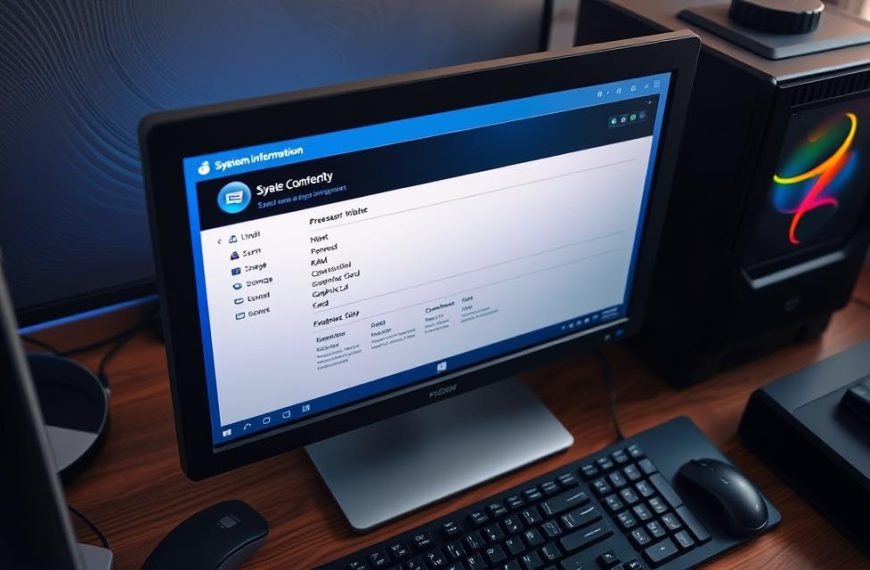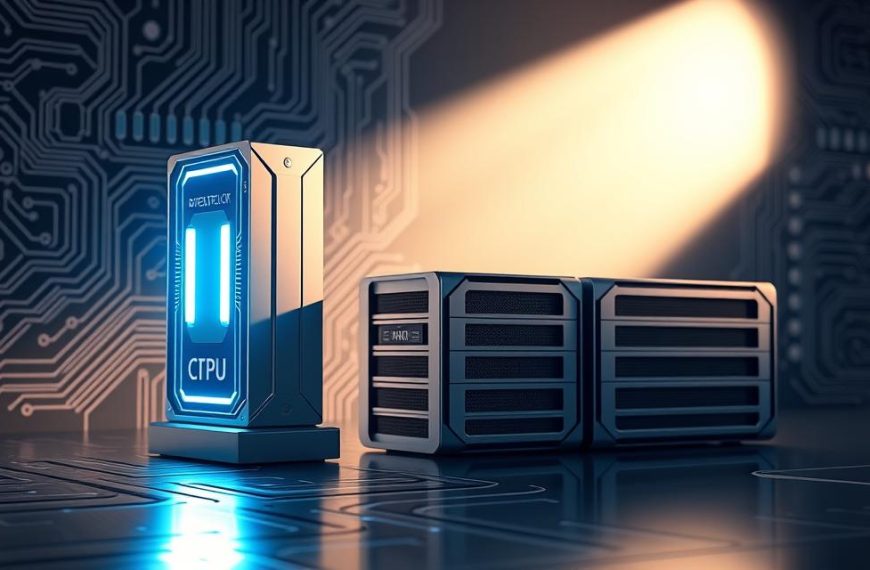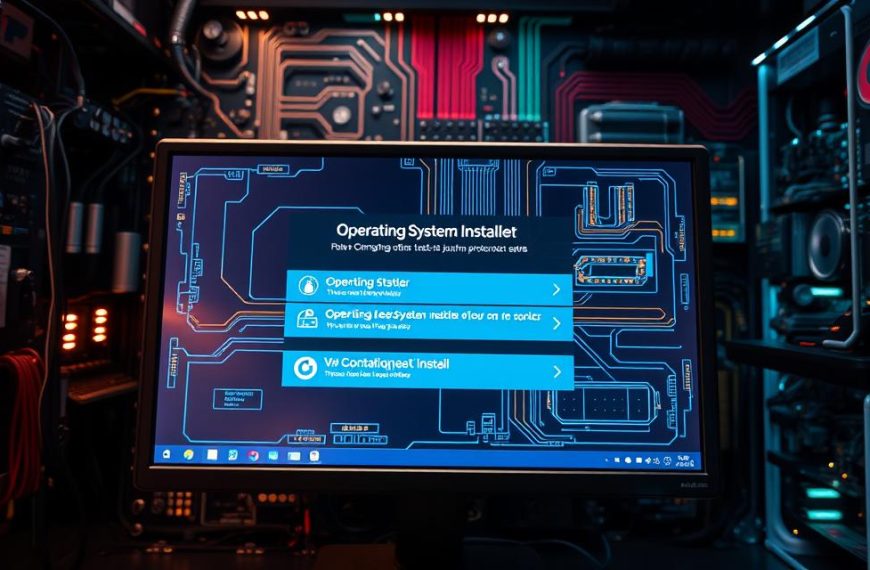At the heart of every computer is a vital part. This core computer component is where all processing happens. It’s the central hub of the computer.
Many people think of it as just the CPU or tower case. But, the computer system unit is more. It’s the home for all the important hardware.
This part is key for both home computers and workstations. Knowing its role helps us understand how computers work well.
The PC system unit has many parts working together. This teamwork makes sure tasks run smoothly in different computing settings.
What Is a System Unit of a Computer?
When people ask how to define system unit, they’re talking about the main part of a computer. It’s the box that holds all the important parts inside. These parts work together to make the computer work and do tasks.
Basic Definition and Purpose
The system unit, also known as the computer chassis, is the main box. It has the motherboard, CPU, RAM, and more. It keeps these parts safe from harm and helps them not get too hot.
This box does a few key things:
- It organises the parts in a good order
- It helps the parts fit together right
- It has ports for connecting to other devices
- It helps keep the parts cool
The system unit is different from things like monitors or keyboards. It’s the core of any computer, whether it’s a desktop, workstation, or server.
Common Misconceptions Clarified
Many think the system unit only means desktop towers. But, system units come in many shapes. Laptops, all-in-one computers, and servers have their own system units too.
Some think the system unit is just the CPU. But, the CPU is just one part of it. It works with memory, storage, and other parts in the box.
Some also think system units are the same for all computers. But, different parts need different boxes. The right box makes your computer work better and last longer.
Key Components Inside the System Unit
Looking inside the system unit, we find a complex world of parts working together. Each part is vital for your computer to work. Understanding these parts helps us see how your device handles information and tasks.
Motherboard: The Central Hub
The motherboard is the main circuit board that connects all parts. It’s like the computer’s brain, making sure everything talks to each other. It’s essential for your computer to work right.
Common Motherboard Types: ATX and MicroATX
There are two main types of motherboards: ATX and MicroATX. ATX is the standard size for most desktops, with lots of room for upgrades. MicroATX is smaller but also has good upgrade options, perfect for smaller spaces.
Central Processing Unit (CPU)
The CPU is like the computer’s brain. It runs instructions and handles data. Its speed, measured in MHz or GHz, affects how fast tasks are done. The CPU has many parts that work together to process information.
Random Access Memory (RAM)
RAM is the computer’s short-term memory. It stores data the CPU needs quickly. Unlike permanent storage, RAM loses its data when turned off. But, it’s very fast, making your computer run smoothly.
Storage Devices: HDD and SSD
Storage devices keep your data safe long-term. Hard disk drives (HDD) use magnetic platters to store data. They’re big and affordable. Solid-state drives (SSD) are faster and more durable but cost more.
Power Supply Unit (PSU)
The PSU changes the power from the wall to what your computer needs. It keeps the power steady, protecting your computer’s parts. This is key for your computer to work well.
Graphics Processing Unit (GPU)
The GPU is for graphics and image processing. It’s important for gaming and video editing. Computers can have built-in graphics or dedicated graphics cards for better performance.
The Purpose and Function of the System Unit
The system unit is more than just a box. It’s the heart of any computer, handling both the work and keeping it cool. It makes sure the computer works well, no matter what you’re doing.
Data Processing and Execution
The main job of the system unit function is to process data quickly. When you type or click, it turns those actions into signals. These signals then travel through the system unit.
The CPU is like the brain, understanding and doing math fast. It works with RAM, which holds data temporarily. Together, they make sure everything runs smoothly.
“The modern CPU can process billions of instructions per second, making real-time computing possible across countless applications.”
This process turns your inputs into something useful. It could be showing pictures, playing music, or running big programs. For more on how CPUs work, check out this guide on processing and memory.
Heat Management and Cooling Systems
Computers get hot because they work hard. Keeping them cool is key to stop damage and keep them running well.
Heat sinks help by taking heat from important parts like the CPU and GPU. They have fins to help cool down. Fans blow air over these fins to carry heat away.
Some computers use liquid cooling. This method moves heat more efficiently. It keeps the computer cool and makes it last longer.
| Cooling Method | Best For | Noise Level | Efficiency |
|---|---|---|---|
| Air Cooling | Standard builds | Moderate | Good |
| Liquid Cooling | High-performance systems | Low | Excellent |
| Passive Cooling | Low-power devices | Silent | Basic |
Knowing how cooling works helps us see how the system unit does its job. It’s all about power and keeping things cool for a great computing experience.
Types of System Units and Form Factors
Computer system units have different shapes for various needs. The shape you pick affects how well your computer works, how much you can add to it, and where you can put it.
Tower Cases: Full, Mid, and Mini
Tower cases are the most common for desktops. They are tall and let air flow well, making it easy to add more parts. There are three main types:
- Full Tower: Great for systems that need lots of room for upgrades
- Mid Tower: Good size for most home computers
- Mini Tower: Perfect for small spaces
Full tower cases have lots of room for graphics cards, storage, and cooling systems. They’re best for gaming, workstations, and servers.
Mid tower cases are balanced. They fit well under desks and hold standard motherboards.
Mini tower cases are small. They’re great for tiny spaces, like home theatres or offices.
Desktop and All-in-One Units
Desktop cases sit on your desk with the monitor on top. They’re stable and easy to get to for drives and connections.
All-in-one computers save space by putting everything in the monitor. They’re neat and simple, perfect for schools, offices, and homes.
“The evolution of form factors reflects computing’s journey from specialised equipment to integrated lifestyle technology.”
All-in-one systems are easy to use but harder to upgrade. They’re loved in places where looks matter, like schools and offices.
Rackmount Units for Servers
Server rackmount units are for data centres. They’re tall and fit in standard racks. Each unit is 1.75 inches high.
| Form Factor | Typical Height | Primary Use Case | Expandability |
|---|---|---|---|
| 1U Server | 1.75 inches | Web hosting, network services | Limited expansion slots |
| 2U Server | 3.5 inches | Application servers, database systems | Moderate expansion capability |
| 4U Server | 7 inches | High-performance computing, storage arrays | Extensive expansion options |
Rackmount systems cool well in tight spaces. They have fast fans and special airflow to keep cool.
These units have cool features like remote control and easy part swaps. They’re great for growing computing power in big places.
Choosing the right shape depends on what you need. Each shape has its own benefits for different uses.
How the System Unit Operates
Exploring a computer’s system unit shows how complex tasks are managed. It’s like a dance where electricity is turned into useful digital actions. This happens thanks to the careful work of each part.
Boot Process and Initialisation
Pressing the power button starts a detailed startup routine. The power supply unit sends electricity to all parts, starting the boot process.
The motherboard’s firmware, like BIOS or UEFI, takes charge first. It runs a Power-On Self-Test (POST) to check if all key parts are working right.
If POST is successful, the system finds the bootloader on your storage. It then loads the operating system into memory, finishing the initialisation. This whole process happens quickly, but it’s full of important steps.
Component Interaction During Operation
When the system is running, parts talk to each other through data paths. The CPU acts as the leader, handling instructions and directing the system.
When you start an app, the CPU gets data from storage. This data goes into RAM for quicker use. The memory modules work with the CPU to keep data moving smoothly.
When you use many apps at once, the CPU splits its time between them. The memory management unit sorts out data needs. The GPU makes the visuals, following the CPU’s instructions.
This teamwork gives us the smooth computing we’re used to. Each part does its job well, working together for a great user experience.
Importance of the System Unit in Computing
The system unit is the heart of any computer. It decides how well your computer works now and in the future. What it’s made of affects its performance today and tomorrow.
Determinants of System Performance
Many parts of the system unit work together to make your computer efficient. The processor’s speed and number of cores affect how well it can do tasks. How much RAM you have also matters, as it lets you run many apps at once.
Storage technology is key for quick start-ups and loading apps. Solid-state drives are faster than old hard drives. The graphics processing unit is important for games, design, and video editing.
These parts form a system where any weak link can slow everything down. Spending wisely on these areas helps your computer perform well for what you need it for.
| Component | Performance Impact | Typical Specifications |
|---|---|---|
| CPU | Processing speed and multitasking | 3.0-5.0 GHz, 4-16 cores |
| RAM | Application responsiveness | 8-32 GB DDR4/DDR5 |
| Storage | Boot and load times | 500 GB-2 TB SSD |
| GPU | Graphics rendering | 4-12 GB VRAM |
Upgradability and Customisation Options
The system unit’s biggest plus is its ability to be changed. Unlike all-in-one devices, tower units can be upgraded piece by piece. This means you can improve your system bit by bit, not all at once.
Upgrades like adding more RAM or a faster storage drive are easy. You can also swap out graphics cards for better graphics. These changes can make your computer last longer and work better.
The design of system units also affects how much you can change them. Tower cases have lots of room for extra parts and cooling. They are made to work with new hardware, making it easy to keep your system up to date.
This flexibility lets you make your computer fit your changing needs. Whether for gaming, making videos, or work, you can upgrade what you need. This makes your computer investment worthwhile for a long time.
Common Issues and Maintenance Tips
Keeping your computer’s system unit in top shape needs regular care. Even though these parts are built to last, they can face problems. Knowing common issues and how to prevent them keeps your system running smoothly.
Overheating and Dust Accumulation
High temperatures are a big threat to your computer’s parts. If it gets too hot, your system might slow down or even shut off. Long-term overheating can damage your electronics for good.
Dust buildup is the main cause of heat issues. Fans pick up dust, which forms a layer that traps heat. This makes it harder for your system to cool down.
Here are some ways to prevent these problems:
- Clean with compressed air every 3-6 months
- Make sure your system has good airflow
- Keep fan filters clean
- Use software to check your system’s temperature
Where you place your computer is also important. Don’t put it in a tight spot or against a wall. Give it some space for better airflow.
Component Failures and Replacement Guidance
Over time, your computer’s parts will wear out. Spotting component failure early can stop bigger problems. Look out for crashes, strange fan noises, and display issues.
When you need to replace parts, follow these steps:
- Unplug your system before opening it
- Touch a metal object to discharge static
- Hold components by their edges to avoid damage
- Keep screws and small parts organised
For detailed computer maintenance tips, check out trusted tech sites. They offer step-by-step guides and safety advice.
When adding new parts, make sure they fit your system. Check the motherboard, power needs, and size before buying. Correct installation helps avoid future problems and extends part life.
Conclusion
The system unit is the heart of any computer. It holds key parts that boost performance and function. This summary shows its vital role in handling data, managing heat, and keeping things running smoothly.
Inside, you’ll find the motherboard, CPU, RAM, and storage devices. Each part works together to get things done fast. Knowing how these parts work helps users choose the right upgrades and customisations.
Keeping your system clean and cool is important. Dust buildup and high temperatures can cause problems. By taking care of your system, you can avoid these issues and keep it running well.
As technology gets better, so does the system unit. New cooling methods, smaller designs, and energy-saving features are on the horizon. Staying up-to-date with these advancements keeps your system strong and ready for new challenges.
This ensures your system stays reliable and meets future needs. The system unit is truly the backbone of modern computing.

